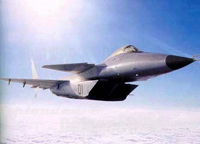Indian 126 fighters tender: Russia’s technical superiority vs US diplomacy
US F-16I is about to clash with its Russian made match Mig-35 in India’s tender for 126 multi-role fighters. Many observers consider that one of these is going to become the winner. The results of the tender will also demonstrate what wins better, technical characteristics or political influence. Today it is evident that the hypocritical United States can put its own policy upside down just to impose nationally made goods to a customer, if it is about billions. This is the only reason why the White House removed the embargo on the sales of arms to India it itself initiated several years ago as a punishment for India’s advancement in nuclear technologies. But how sincere are the American gestures for cooperation in the military sphere? Today nothing bothers US more than the $9 billion it can get from the deal. However, with accounts settled, will India be sure that the US arms makers won’t use its technical dependence on the suppliers?

It is the US which did its best to prevent the Israeli-Russian-Indian project on the deliveries of the Russian Il-76 AWACS type planes fitted with the Israeli avionics to India. In the notorious Turkish helicopter tender, where Russian-Israeli Erdogan beat US Bell in all possible technical characteristics and unlike their American competitors Russia was ready to share its latest helicopter technologies with the customer, the US used its unprecedented political pressure to ruin the deal. When money counts US suppresses even its own allies. Let’s remind the reason why some time ago Israel had to refuse from buying a big number of Airbus liners. Regardless of the economic considerations of the customer the US imposed Boeings using political blackmail. It would be easy to go on with such examples, but it is more interesting to draw attention to the technical comparisons of the US and Russian made fighters.
In the past several years there have been several events, where the fighters of the two world military aviation leaders could test each other, including test fights. In Gwalior, February 14-26, 2004 Indian and American Air Forces held their first joint combat exercise, where the score between F-16 and Mig-29 was close to 9 to 1 in favour of Migs. At that time even the US media wrote about the USAF in front of the senate committee asking for money for the Raptor (latest US fighter). They called it a political suicide to tell the American public that the government is putting their pilots in an aircraft where they are probably going to die at a rate of 9 to 1. Was it one of the reasons why F-35 got such unprecedented budget?
One should not ask western pilots for references. They are likely to point to the combat victories of F-16 in the past regional conflicts. However, in 100% of cases later F-16s models fought their fewer foes in absolutely more advantageous conditions against earlier versions of Mig-29s operated by the helpless units (like in Yugoslavia or Iraq). The "Mig-29 slaughter" (a hypocritical phrase of US pilots during the campaign) took place between the F-16s which received AWACS support and the Mig-29s over Serbia when Serbian Mig-29 with no support from the ground were outnumbered in all the incidents they were shot down. Also, the Serbs operated only about 10-15 Mig-29s. The same was in Iraq. Just because American pilots with much upgraded F-16s with the support of AWACS could take down older Iraqi Mig-29s with no such support doesn't mean the F-16 is superior. (Is it the reason why US objected to the plans of India to have own AWACS?)
The first loss of the US fighters must not have been accidental. In a year the tests were repeated with unclaimed superiority of the Russian fighters. At that time authoritative murdoconline.net wrote: Did the USAF get beat up by India again? No-one's saying so officially, but after the shock of having their F-15s kicked around the sky last year by the Indian Air Force in Russian jets, the USAF must have been hoping to even the score in this year's US/India air exercises. The thing is, the only reports so far (and admittedly they are Indian reports) suggest they got anothershock.
Itis not correct toname ita shock. The USAF knew a long time before that its fighters are technically inferior to the Russian matches. After the disintegration of the USSR and the Warsaw Pact NATO’s Germany inherited Soviet Mig-29s, which were, naturally, thoroughly analyzed. Then it was discovered that in combat, provided that the MiG-29's 7.5g above 0.85 mach can be avoided, it should beat any F-16 due to its BVR capability, higher thrust/weight ratio and lower wing loading. The exercises between USAF F-16 and German MiG-29A's showed that in ACM the greatest advantage the MiG-29 was its world’s first helmet mounted sight coupled with the AA-11 Archer which gives it a kill zone greater than any aircraft serving. F-16 pilots found out that any aircraft within 45deg's of the nose of a MiG-29 was always under grave threat. The ability to target aircraft with helmet aiming proved to be such a success that helmet mounted sights have become requirements on any new fighter program. Then in joint USAF-Luftwaffe exercises the downgraded MiG-29 9-12A that the Luftwaffe fielded defeated the F-16 Fighting Falcon in close-range combat almost every time.
Traditional property of the Russian military hardware is that it is extremely reliable in most difficult environments. For example, F-16 like nearly all US made arms, requires perfect maintenance and operating conditions. With regard to the so called FOD (foreign object damage) the US engine makers decided that the FOD would not be a problem as the F-16 would operate form swept and paved runways. Russians felt that a rough field capability was an important property and made Mig-29 with two movable ramps over the intakes to prevent FOD while on the ground or at low speed at low level. When the intakes are closed the engines breath via auxiliary intakes on the upper surface of the wing.
Naturally, both aircraft have short-comings. However, those of the MiG-29 have effectively been solved with the newer versions (Mig-29 S/M/T), which have increased fuel capacity as well as in-flight refuelling system. The number of fixing points also increased by two and the maximum payload doubled, along with the inclusion of a fly-by-wire flight control system and a new radar. Most of these upgrades have been offered to the current users of the Mig-29.
The improvements of F-16 were not so principal. One of its greatest drawbacks, the lack of a BVR capability, was solved with the clearance of the AMRAAM missiles (about to appear in Russia), but the second major problem of insufficient wing area on the F-16C has never been solved.
What Russia brings to the Indian tender is the absolutely latest version of the aircraft, Mig-35 (Fulcrum-F). This is a fighter that has aerobatic capabilities which cannot be repeated even by the appearing prototypes of the 5th generation jets. It was specially created to participate in the third modification after Mig-29MRCA and Mig-29M2. Designation and colour scheme were changed, together with new engines and avionics. The Mig-35 was first released to the pubic at the air show Aero India 2007 in Bangalore. With a new design concept it is no longer tied to the ground-controlled interception system and able to conduct multi role missions independently.
Some of the most remarkable technical improvements to the aircraft are Phazotron’s Zhuk-AE active electronically scanned array radar, RD-33MK engines and the newly designed optical locator system. The new OLS can provide targeting solutions for both ground and air targets at 360 degrees of the aircraft. All controls are digital displayed on LCD. RD-33MK "Morskaya Osa" engine has a 7% higher horsepower compared with the original one due to the usage of modern materials on the cooled blades. It also has systems that reduce its infrared and optical visibility. The engines could be equipped with the thrust vectoring nozzles which would increase combat efficiency by 12-15%. This is the world’s only thrust vectoring engine that has the ability to rotate in all directions.
Yuri Seleznev
Subscribe to Pravda.Ru Telegram channel, Facebook, RSS!


